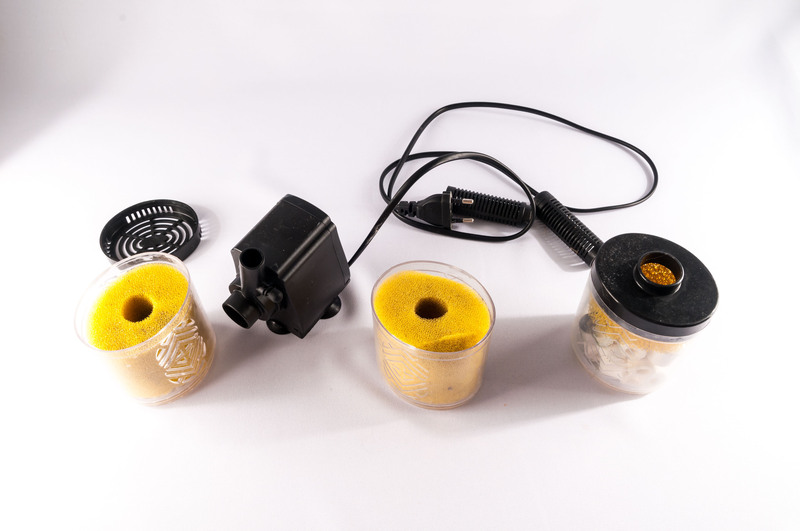A Beginner's Guide to Kinetic Lifting Practices
Kinetic lifting is revolutionizing fitness, promising smarter, safer ways to build strength, agility, and functional power. Whether you're stepping into a gym for the first time or wanting to refine your techniques, understanding the *mechanics* and *principles* behind kinetic lifting practices is crucial. This comprehensive guide serves to demystify kinetic lifting, ensuring you approach your training with confidence and knowledge.
What is Kinetic Lifting?
At its core, kinetic lifting refers to strength training techniques that optimize the body's natural movement patterns. Rather than focusing purely on isolated movements, kinetic lifting encourages integration of multiple muscle groups, emphasizing safe biomechanics and functional strength. This holistic approach is gaining momentum among fitness enthusiasts, athletes, physical therapists, and beginners alike.
- Focuses on Movement Quality: Instead of just moving weights from point A to point B, kinetic lifting promotes mindful, controlled movement.
- Prevents Injuries: Because form and movement are prioritized, lifters are less likely to injure themselves compared to traditional lifting methods.
- Facilitates Functional Strength: These practices translate seamlessly into daily life, sports, and recreational activities.

Benefits of Kinetic Lifting Practices
- Enhanced Mobility and Flexibility: Kinetic lifting develops your mobility, crucial for injury prevention and overall athleticism.
- Improved Core Strength: Many kinetic lifts are compound movements, naturally engaging your core.
- Balanced Muscle Development: By engaging several muscle groups, kinetic techniques help avoid muscular imbalances found in isolated training.
- Better Posture: These techniques retrain your body for optimal, upright posture--vital for desk workers and athletes.
- Increased Caloric Burn: More muscles engaged per lift mean greater calorie expenditure, supporting weight management and fat loss.
Essential Kinetic Lifting Principles for Beginners
Learning kinetic lifting requires a strong foundation in the basics. Here are several important movement principles to set you up for long-term progress:
1. Move Through Full Range of Motion
A hallmark of kinetic lifting practices is performing each repetition with a complete range of motion. This not only builds strength but also enhances flexibility and joint health.
2. Prioritize Technique Over Load
It is tempting to load up the barbell, but *kinetic efficiency* depends on *precise movement*. Focus first on mastering correct patterns--begin with light weights or even bodyweight exercises.
3. Engage Your Core
Kinetic strength starts at your center. Engage your core muscles during all lifts, protecting your spine and transferring power efficiently.
4. Breathe with Intention
Synchronize your breathing with your movements--inhale during the preparation or eccentric phase, exhale during the exertion or concentric phase.
5. Incorporate Progressive Overload
Results come from gradually increasing stress on your muscles. This can mean more weight, reps, or complexity in movement.
Key Kinetic Lifting Exercises for Beginners
Incorporating the following kinetic movements will help you develop the strength and coordination you need, forming the backbone of many training programs:
- Squats (Bodyweight, Goblet, and Barbell): Excellent for lower body and core, teaching proper hip and knee mechanics.
- Deadlifts (Kettlebell or Barbell): Essential for posterior chain strength and safe lifting technique.
- Lunges: Great for balance, unilateral strength, and addressing imbalances between sides.
- Push-ups: Build upper body kinetic strength, working chest, shoulders, triceps, and core.
- Pull-Ups or Rows: Fundamental pulling movement for back, arms, and shoulder health.
- Overhead Press: Teaches vertical pushing and demands excellent core stability.
How to Start Your Kinetic Lifting Practice
Setting up for success in kinetic strength training requires careful attention to warm-up, execution, and recovery:
Step 1: Prepare Your Body
- Warm-Up: Use dynamic stretches like arm circles, leg swings, and torso twists.
- Mobility Drills: Incorporate movements targeting hips, shoulders, and spine.
- Mental Focus: Set clear intentions for your session and visualize correct form.
Step 2: Master Movement Patterns Without Weights
- Bodyweight Practice: Rehearse squats, hip hinges, and lunges emphasizing control.
- Video Analysis: Record yourself to check for compensation or poor postures.
- Mirror Feedback: Use mirrors for immediate postural feedback.
Step 3: Integrate Light Weights and Compound Movements
- Select Functional Exercises: Goblet squat, kettlebell deadlift, standing press.
- Progressively Increase Load: Only when you can perform multiple sets with perfect form.
- Prioritize Movement Quality: Stop if your form breaks down.
Step 4: Cool Down and Facilitate Recovery
- Light Movement: Gentle walking or cycling to flush metabolites.
- Stretching: Target areas worked in the session.
- Hydrate and Refuel: Support recovery with water and a meal rich in protein and healthy carbs.
Common Mistakes in Kinetic Lifting (and How to Avoid Them)
Even with the best intentions, entry-level lifters can fall into these traps. Awareness ensures you bypass setbacks and injury risks:
- Poor Posture: Rounding your back in deadlifts or letting knees cave in during squats can be dangerous. Solution: Slow down and reset your starting position between every rep.
- Overloading Too Soon: Increasing weight before perfecting technique. Solution: Wait until the movement feels easy and automatic before progressing.
- Ignoring Core Engagement: Not bracing your abdomen puts your spine at risk. Solution: Practice breathing and bracing drills regularly.
- Skipping Warm-Ups: Cold muscles are more prone to strains. Solution: Always invest at least 10 minutes in your pre-workout preparation.
- Neglecting Recovery: Training every day without rest leads to fatigue and subpar results. Solution: Schedule at least one full rest day per week--and listen to your body!
Fundamental Equipment for Kinetic Strength Training
You don't need a fully-stocked gym to begin kinetic lifting. With minimal equipment, you can embark on your journey:
- Kettlebells: Versatile for deadlifts, swings, and carries.
- Dumbbells: Excellent for pressing, rowing, lunging, and loaded carries.
- Resistance Bands: Useful for mobility, activation, and light pulling movements.
- Barbells and Plates: Ideal for progressive overload as you advance.
- TRX or Suspension Trainer: Enables rows, pushups, core work with your own bodyweight.
- Foam Roller & Mat: Support mobility work and recovery.
Building a Beginner-Friendly Kinetic Lifting Routine
Ready to try your first kinetic lifting regimen? Here's a sample beginner plan that emphasizes movement mastery and balanced development:
Sample 3-Day Per Week Kinetic Lifting Program
-
Day 1: Lower Body Focus
- Bodyweight Squats: 3 sets of 12 reps
- Kettlebell Deadlifts: 3 x 10
- Reverse Lunges: 3 x 8 per leg
- Core Plank: 3 x 30 seconds
-
Day 2: Upper Body and Core
- Push-Ups (incline if needed): 3 x 10-15
- Dumbbell Row: 3 x 12 per arm
- Overhead Press: 3 x 10
- Dead Bug or Bird Dog: 3 x 10 per side
-
Day 3: Full-Body Integration
- Goblet Squats (with light dumbbell/kettlebell): 3 x 10
- Step-Ups: 3 x 8 per leg
- TRX Rows or Band Pull-Aparts: 3 x 12
- Farmer's Carry: 3 x 30 seconds
Tip: Allow at least one rest day between sessions. Focus on slow, controlled reps. Only add weight when all sets can be completed with impeccable form.
Tips for Long-Term Success in Kinetic Lifting
- Be Patient: Developing movement skills and strength takes time--celebrate small wins.
- Track Your Progress: Use a training journal or app to record exercises, weights, reps, and how you feel.
- Smile at Setbacks: Progress isn't linear. Occasional plateaus or regressions are normal.
- Educate Yourself: The more you learn about biomechanics, anatomy, and kinetic exercise, the deeper your results.
- Consider Professional Guidance: A certified personal trainer can correct movement patterns and design a personalized plan.

Frequently Asked Questions About Kinetic Lifting Practices
Is kinetic lifting safe for absolute beginners?
Absolutely! Because movement quality is the priority, this style is beginner-friendly. Start with bodyweight and low-resistance movements until you are confident in your form.
How often should I practice kinetic lifting?
For most beginners, 2-3 times per week provides enough frequency for progress and adequate recovery. Focus on full-body or alternating upper/lower sessions.
Do I need a gym membership for kinetic training?
No! A home setup with basic tools like dumbbells, bands, or kettlebells is sufficient for most beginners. As you advance, access to more equipment may enhance your training options.
Can kinetic lifting help with weight loss?
Yes. Compound movements burn more calories and preserve lean muscle mass. When paired with a balanced diet, kinetic training is a powerful tool for fat loss.
Conclusion: Begin Your Kinetic Lifting Journey Today
Kinetic lifting practices are a *smart, modern approach* to strength and functional fitness. By prioritizing movement, mindfulness, and gradual progression, you'll not only build muscle but also enhance mobility, confidence, and overall well-being. Whether you're a total beginner or someone looking to refine their technique, the fundamentals of kinetic lifting can support your journey to a stronger, more resilient body.
Embark on your kinetic lifting adventure today--focusing on *quality movement*, consistency, and continuous learning. Your future self will thank you!



